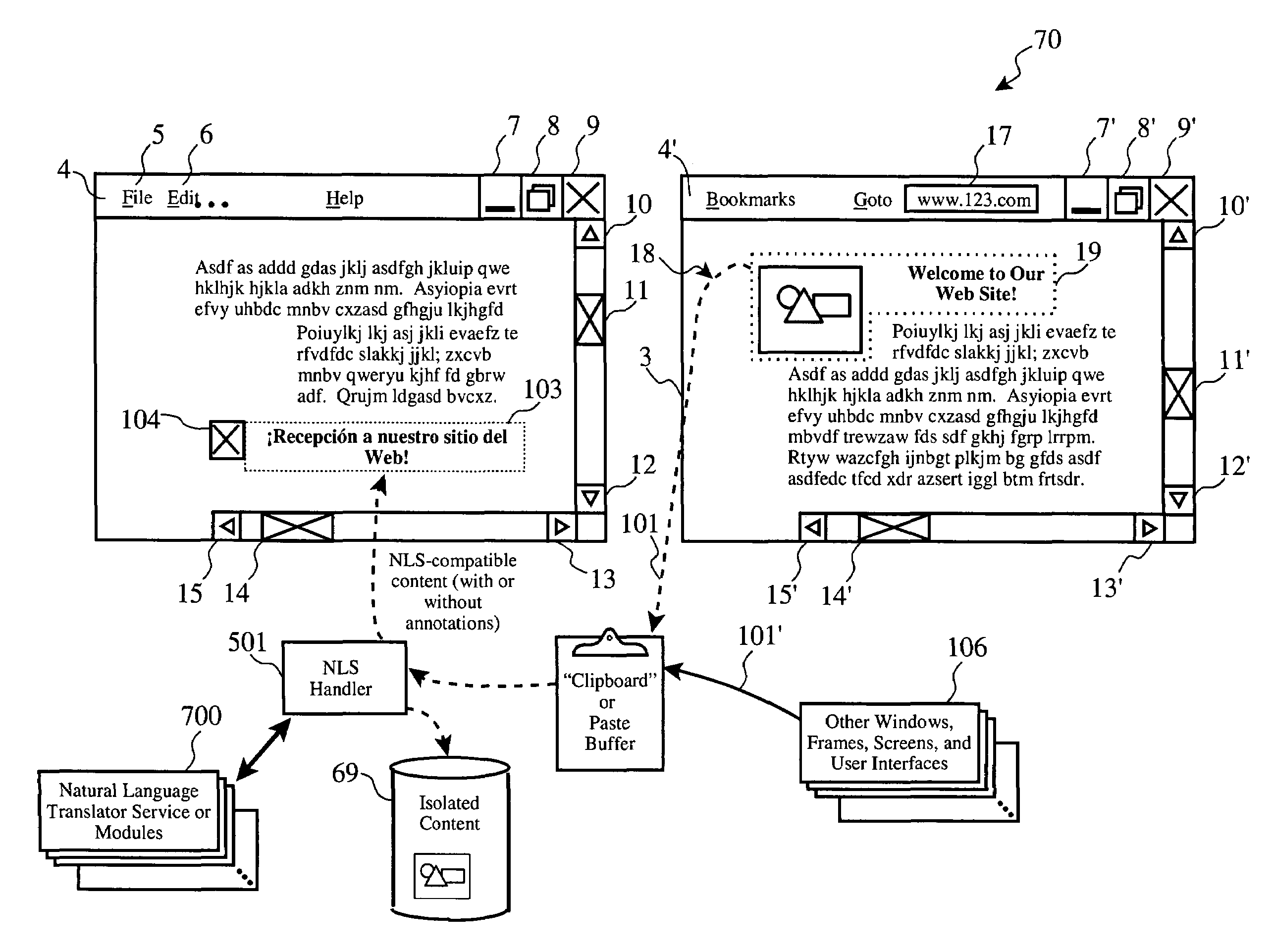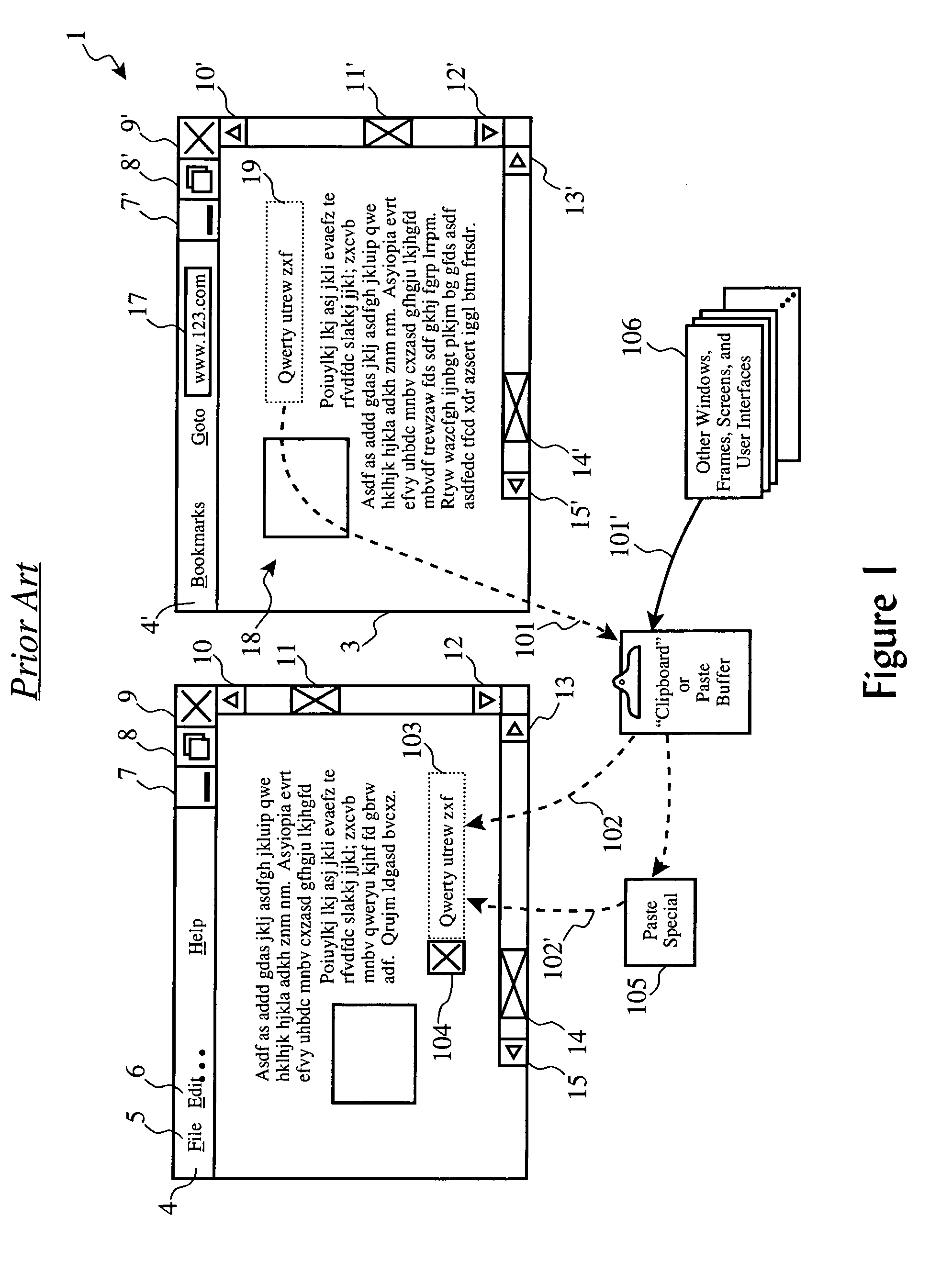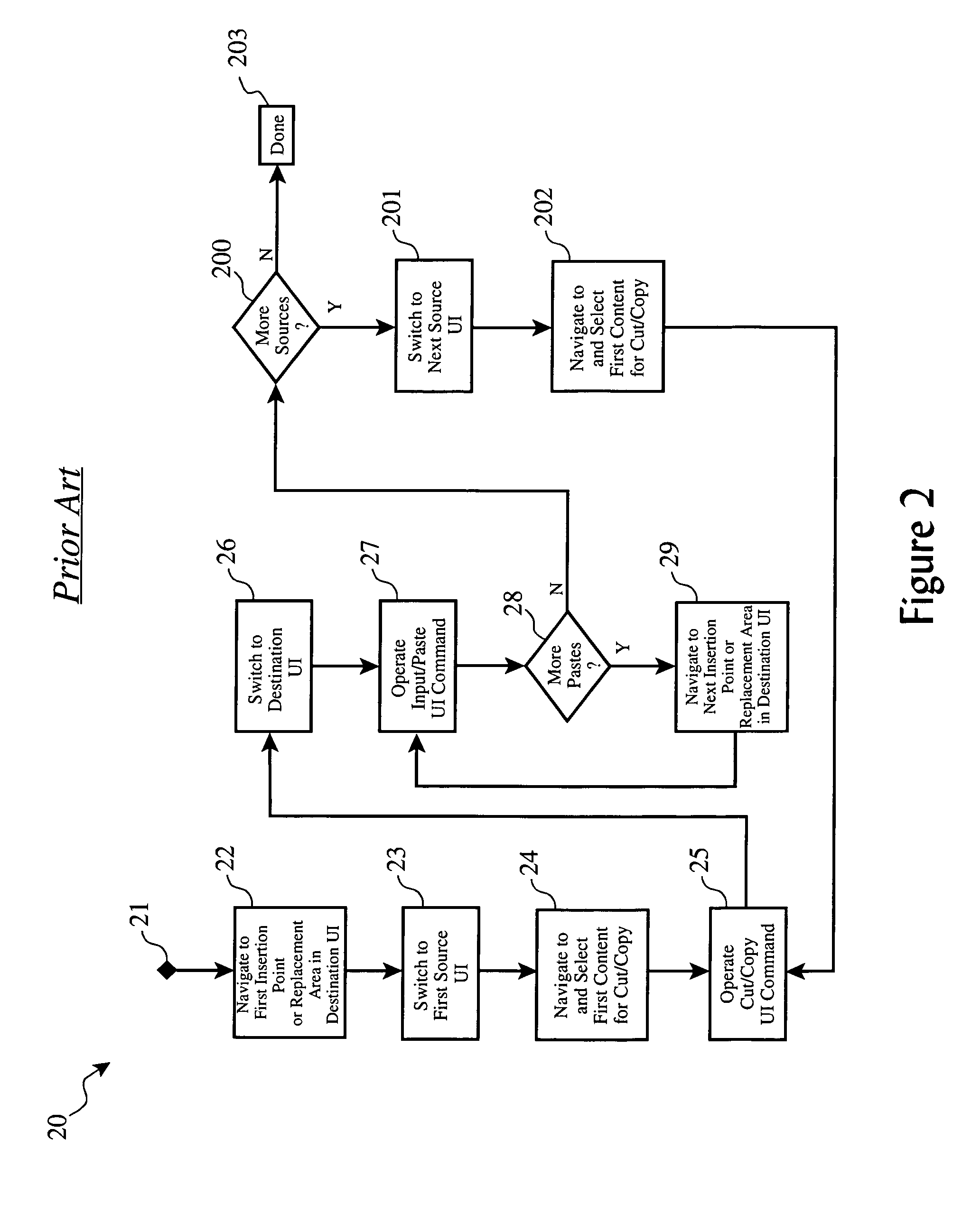System and method for automatic natural language translation during information transfer
a technology information transfer, applied in the field of automatic natural language translation during information transfer, can solve the problems of difficult and “clunky” use of other systems, inability to accept original content with its original format, and frustration,
- Summary
- Abstract
- Description
- Claims
- Application Information
AI Technical Summary
Benefits of technology
Problems solved by technology
Method used
Image
Examples
Embodiment Construction
[0051]The present invention is preferably realized in conjunction with either or both of the systems and methods described in the related patent applications which are entitled “System and Method for Content and Information Transfer Between Program Entities” and “System and Method for Automatic Information Compatibility Detection and Pasting Intervention”, both of which were filed by Yen-Fu Chen, et al. The former application provides an improved method for cutting and pasting information from multiple sources into a destination file, while the latter provides an improvement in which content is automatically converted to a digital format which is compatible with the destination file or computer resource. It will be recognized by those skilled in the art, however, that the present invention may alternately be realized independently of these related inventions, or in conjunction with other technologies and products.
[0052]Throughout the present disclosure, we will utilize the terms “sp...
PUM
 Login to View More
Login to View More Abstract
Description
Claims
Application Information
 Login to View More
Login to View More - R&D
- Intellectual Property
- Life Sciences
- Materials
- Tech Scout
- Unparalleled Data Quality
- Higher Quality Content
- 60% Fewer Hallucinations
Browse by: Latest US Patents, China's latest patents, Technical Efficacy Thesaurus, Application Domain, Technology Topic, Popular Technical Reports.
© 2025 PatSnap. All rights reserved.Legal|Privacy policy|Modern Slavery Act Transparency Statement|Sitemap|About US| Contact US: help@patsnap.com



